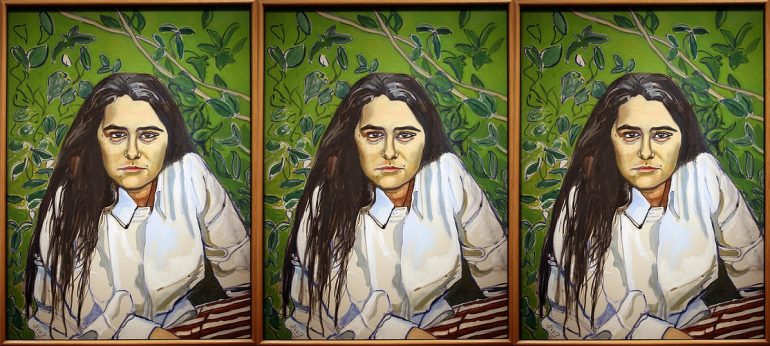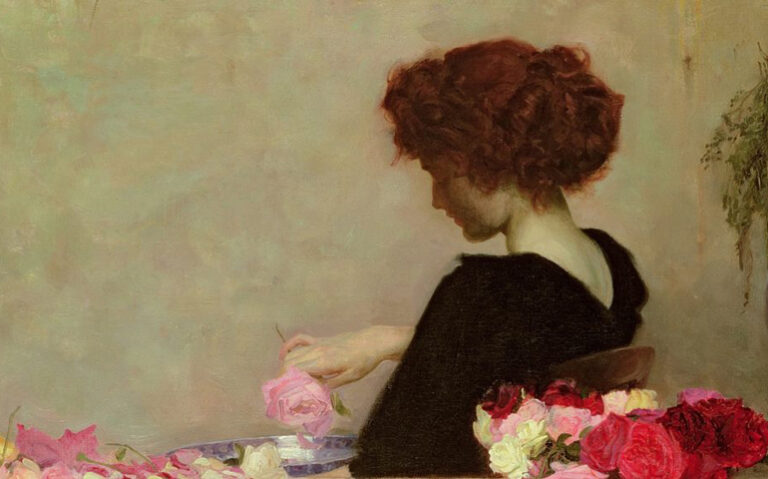Character Through the Portraits of Alice Neel

Almost everything I know about character development, I learned by studying the portraits of Alice Neel.
Alice Neel painted portraits in the mid-20th century at a time when the art world considered portrait painting nearly irrelevant. Portraiture was originally and is often still practiced as a form to honor the wealthy, nobility, historical and religious figures. These paintings are crafted to present an idealized version of their subjects. They are self-referential and aggrandizing, and in this way often more about how the subjects view themselves and less about how the painter sees them.
But portraiture can be used in many ways. Warhol used it to make commentary on celebrity and social norms. Chuck Close’s massive scale portraits are an exercise in perception and seeing. But no other modern day artist lays bare the human condition like Alice Neel.
Neel is known as a painter for her unflinching view of character and her uncanny capacity to capture complex mood. Her ability to portray the nuanced nature of her subjects by amplifying the qualities that make that nature unique is considered singular and brilliant. Her paintings capture personality that is universal and individual, familiar yet distinctive, qualities that all great characters should have. I have learned about character and character development by studying the way her portraits strip away irrelevant detail and leave the viewer staring deeply and squarely inside the psychology of her subjects.
Many things—the events in our lives, the choices we’ve made, and the actions we chose to take, define character. All those experiences are stamped across our faces. The truth about a human being, what kind of life they’ve had, what kind of person they are, can be learned by looking closely at their face.
Hair color, skin tone, wrinkles, scars, blemishes, bone structure—a face is a map of a human being’s life and that of every ancestor who came before them. It’s a time capsule of sorts. It tells us how much of life has passed and what the quality of that life has been.
In the grooves between the eyes, we can see how often a person has worried. The tiny differential shapes of those lines reveal what kind of worry it has been: stern and focused or resigned and sad.
In in the corner of a lip, there can be a secret or a smirk. The lips can twist in all directions. Just take a minute and see how many different ways you can move them. In each one of those incremental movements, there is specific and particular expression.
Crow’s feet tell us how much a person has smiled over time. And we can see by the angle and the movement of those wrinkles if a smile is genuine or fake. A fake smile doesn’t typically engage the eyes. Only the cheek muscles move, pulling the corners of the mouth back.
Distractedness, disgruntlement, laziness, anger, sincerity, evilness, coyness—the eyes, above all else, can convey almost anything. Our pupils respond involuntarily, dilating with heightened emotion and contracting with boredom. A glance can affect us physiologically. It can give us chills or excite us sexually. And the eyes, as we know, are a window into the soul.
There are forty-three muscles in the face. Hundreds of expressions animate across it daily. They transform how we feel about ourselves and how others feel about us. We have the unique ability to read these expressions. Like some ancient Morse code, we can synchronize the individual features of face into a complete understanding of a whole. The inability to do so puts a person at a grave disadvantage, because language by itself is often inadequate. The simple phrase “that’s great” can be sincere or sarcastic, and we can discern which one by reading the expression on the speaker’s face.
The language of the face is more accurate and universal than the one we speak. Characters often speak not to reveal the truth, but to conceal it. Micro expressions, subtle movements and twitches, sometimes only decipherable by experts, can reveal a person’s true intentions even when the subjects are unaware of them themselves.
Alice Neel’s subjects sat for her. She rarely painted from memory or used photographs as reference. She looked directly at and into her subject’s face, and by doing so she captured something rare: the essence of character and the story of her subject’s life. If a picture is worth a thousand words, than an Alice Neel portrait is worth a million.
We rarely meet face to face anymore. We don’t often look directly at one another, and I worry sometimes that we are in danger of losing our ability to make eye contact and to read the human face. Grinning face, pouting face, face blowing a kiss, our complex system of expressions has been reduced to badly drawn symbols of a face in emojis.
But we will always have Alice Neel to turn to. To see the world through her prism is to understand deeply what it means to be a human being.


